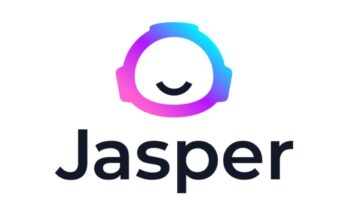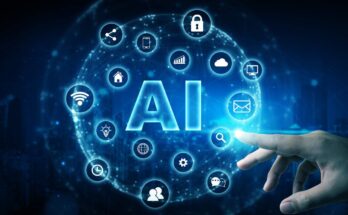The era of artificial intelligence and machine learning has generated a need for businesses to have powerful tools by which they can intelligently and efficiently build, deploy, and manage AI models. Vertex AI, Google Cloud’s unified AI platform, has come to be regarded as just this sort of tool that has, in essence, redefined how organizations use AI. Regardless of whether one is a data scientist or an AI engineer or even a business professional who looks forward to integrating AI into workflow, V AI simplifies the job of the user through an end-to-end solution.
In this blog, we are going to talk about Vertex AI: what it is, features, advantages, and use cases, and some comparisons with other AI platforms.
V = Vertex
What is Vertex AI?
Vertex AI by Google Cloud is a machine learning platform that allows building, training, and deploying ML models with zero or minimal effort. V AI is an umbrella that brings the various Google Cloud AI tools together, providing a seamless workflow for any AI development project. With V AI, it is possible for organizations to manage datasets, experiment with models, automate ML pipelines, and deploy models at scale from one interface.
In Vertex AI, all aspects of the life cycle of AI projects are covered, thus making collaboration much easier and more streamlined for teams as compared to the previous way of developing even AI where different tools perform model training, data labeling, hyperparameter tuning, and deployment.
Features of the Vertex AI Key
1. AI Platform Based Unified
Completely unifying AutoML, custom model training, and MLOps in Vertex AI is a single base for different working tools for using AI, halting human practice towards building a model in an organization and making it easier to manage different AI facilities.
2. AutoML and Custom Model Training
This AutoML would allow users with the least amount of experience in machine learning to build automatic AI models. This platform, however, allows professional data scientists to do custom model training by using TensorFlow, PyTorch, or Scikit-learn.
3. Managed Pipelines
Run your end-to-end workflow ML by using Vertex AI Pipelines. Maximize productivity with the automation of processes such as data preparation, model training, evaluation, and deployment in a structured and repeatable way.
4. Monitoring and Explainability of Models
Continuous monitoring tools and explainability by Vertex AI are some ways to keep AI models accurate over time. Users can check for model drift, bias detection, and reasoning behind the decisions taken by the AI model.
5. Integration with Google Cloud Services
Being built on Google Cloud, Vertex AI can thus be integrated with all other services of Google, such as BigQuery, Cloud Storage, Dataflow, thus streamlining data processing and analysis.
6. Scalability and Cost Optimization
The platform is designed to scale AI workloads whenever demand arises, and yet includes cost optimization features so that enterprises can afford to train and deploy their AI models without incurring more unnecessary expenses.

Benefits of Using Vertex AI
1. Simple AI Development
V AI unbundles that whole machine learning flow into a plain platform, whereby everything that is needed can be found in a single application. Therefore, one is a less hassle of managing a lot of things in terms of AI tools to enhance efficiency.
2. Enables Productivity
Enabled with AutoML and prebuilt models, companies can quickly develop and deliver AI solutions without needing to possess deep AI expertise. Such factor shortens the time needed for AI operations in every industry.
3. Custom AI Models
Unlike other AutoML solutions, Vertex AI does not restrict the customization of models for developers who want to build train, and fine-tune their models, hence creating flexible AI development.
4. Enterprise-Class Security Protection
It runs on Google Cloud and secures its structure according to that of Google regarding the security paradigm provided by Google in regards to data privacy and compliance.
5. Scalable AI Deployment
Vertex AI scales with business needs, offering flexibility for startups and enterprises, making it applicable to organizations of all sizes.
Use Cases of Vertex AI
1. Retail and E-commerce
AI-powered chatbots handle all the repetitive customer services, while recommendations are personalized, and inventory management is optimized for retailers by Vertex AI.
2. Healthcare and Life Sciences
Medical institutions are deploying Vertex AI to analyze images, predict patient outcomes, and improve disease diagnostics.
3. Finance and Banking
Vertex AI can also be used by banks and other financial institutions to detect fraud, assess risks, and employ algorithmic trading.
4. Manufacturing
Manufacturers optimize predictive maintenance, quality control, and supply chain operations using AI models powered by Vertex AI.
5. Marketing and Advertising
Marketers use Vertex AI to enhance customer segmentation, automate ad targeting, and boost campaign performance with AI-driven insights and analytics.
Vertex AI vs. Other AI Platforms

V AI separates itself from the other AI platforms because of its integrated and easy-to-use Cloud services features and great AutoML capabilities comparing to other competitors such as AWS SageMaker or Azure Machine Learning, which have a more generic and user-friendly take on things. MLOps capabilities, scalable AI deployments, and enterprise-grade security create a whole package AI solution for businesses of any size.
| Feature | Vertex AI | AWS SageMaker | Azure Machine Learning |
| Ease of Use | High | Moderate | Moderate |
| AutoML Support | Yes | Limited | Yes |
| Custom Model Training | Yes | Yes | Yes |
| Integration with Cloud Service | Google Cloud | AWS | Azure |
| Built-in MLOps | Yes | Partial | Partial |
| Scalability | High | High | High |
What’s the Difference Between Vertex AI and Meta AI?

Vertex AI and Meta AI are landmarks in the AI landscape, but they have different functions. These are the primary differences in Parenthesis: Google Vertex AI – it’s a cloud-based AI platform designed to build, train, and deploy machine learning models efficiently for every enterprise and developer who would require a complete, saga-styled AI solution. Meanwhile, it enrolls for the application with Google Cloud, making it-fitting for businesses.
On the other hand, What is Meta AI? is Meta’s artificial intelligence research division, focused on advancing AI in fields such as deep learning, computer vision, and natural language processing. Meta AI is dedicated to the advances in artificial intelligence-also deep learning, computer vision, and perhaps natural language processing technologies. But application-wise, these prove more of their use in research and development phases within the ecosystem of Meta, enhancing recommendations, virtualization models, or AI-powered assistants.
Those are fundamental differences: Vertex AI is an enterprise AI development platform for businesses and developers, while Meta AI, a research organization dedicated to research and innovation on artificial intelligence for Meta platforms, completely uses this. For any enterprise that seeks production-grade scalable and cloud-based AI solutions, then Vertex AI is the better choice. However, if the intent is about the modern cutting-edge AI research, then Meta AI would be definitely worth following.
How to Get Started with Vertex AI
- Create a Google Cloud account: If you’re unfamiliar with Google Cloud, sign up with a Google account at Google Cloud.
- SAP is Vertex AI: Visit Google Cloud console, go to V AI and call the required APIs to offer the service.
- Adjust the corresponding data: Put in data and manipulate it depending on Big query or Cloud storage as data is getting ready.
- Model Type Selection: Put the training on AutoML or build a custom model using Jupyter note book for training.
- Deploy the Model: Take your model deployment under V AI Managed Services and monitor for production settings.
Conclusion
Vertex AI emerges as a befittingly powerful AI lifeboat, enabling even the smallest of businesses to develop and deploy their own machine learning models. With features such as AutoML, custom training, managed pipelines, and simple cloud integration, V AI empowers organizations to efficiently tap the power of AI.
If you need a scalable, secure, and cost-effective AI solution for your business, V AI is definitely worth considering. Whether you’re new to AI or a vendor, Google’s V AI provides flexible tools and support to help you succeed with innovation.




